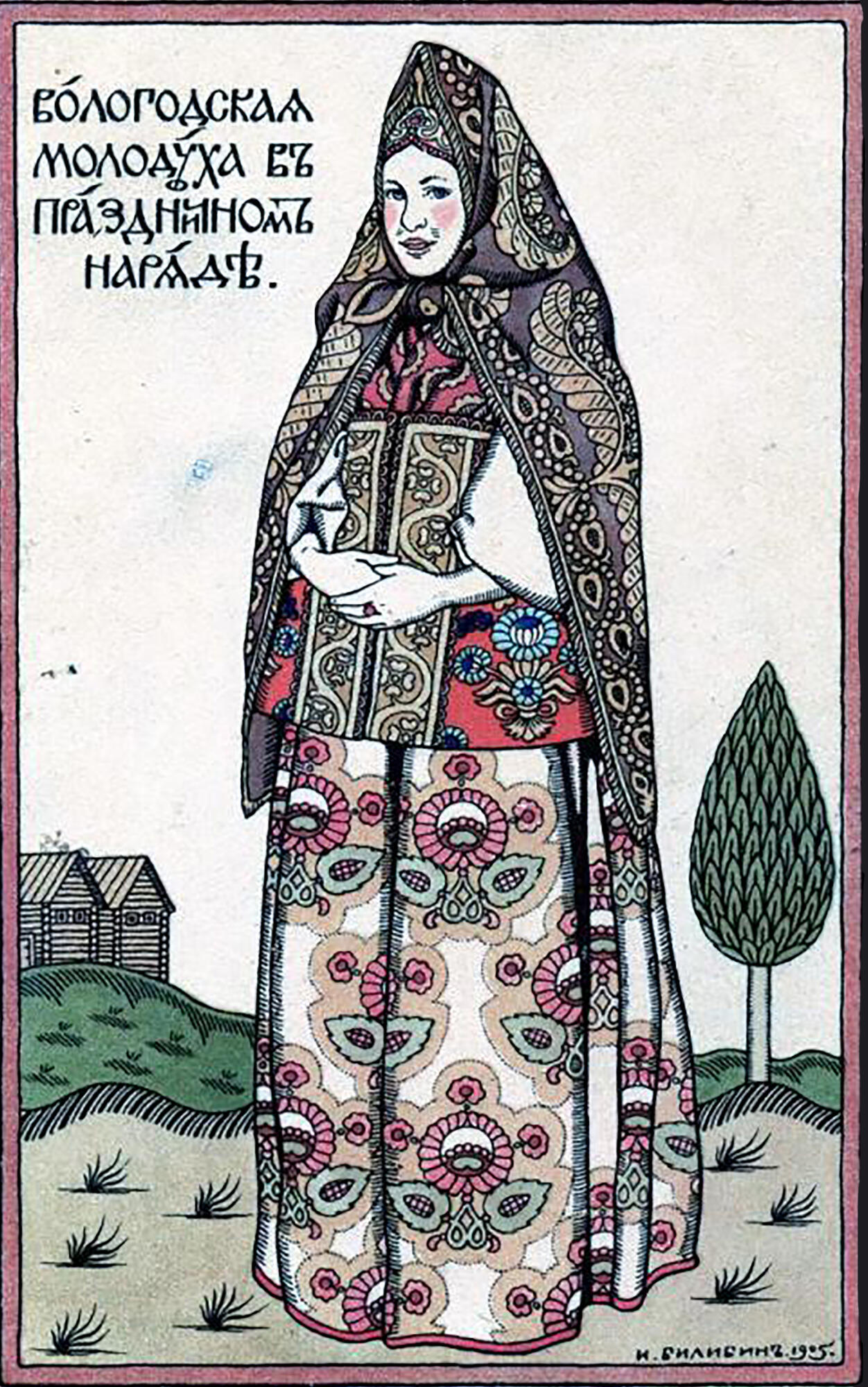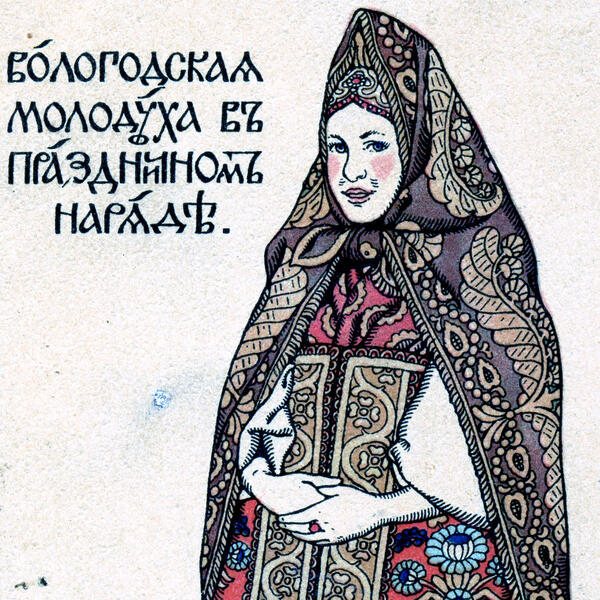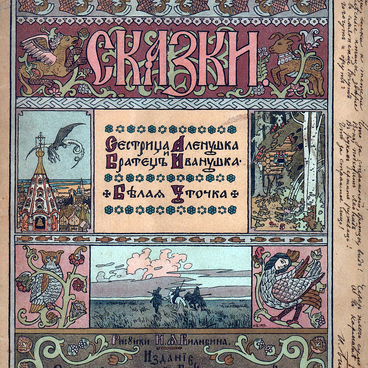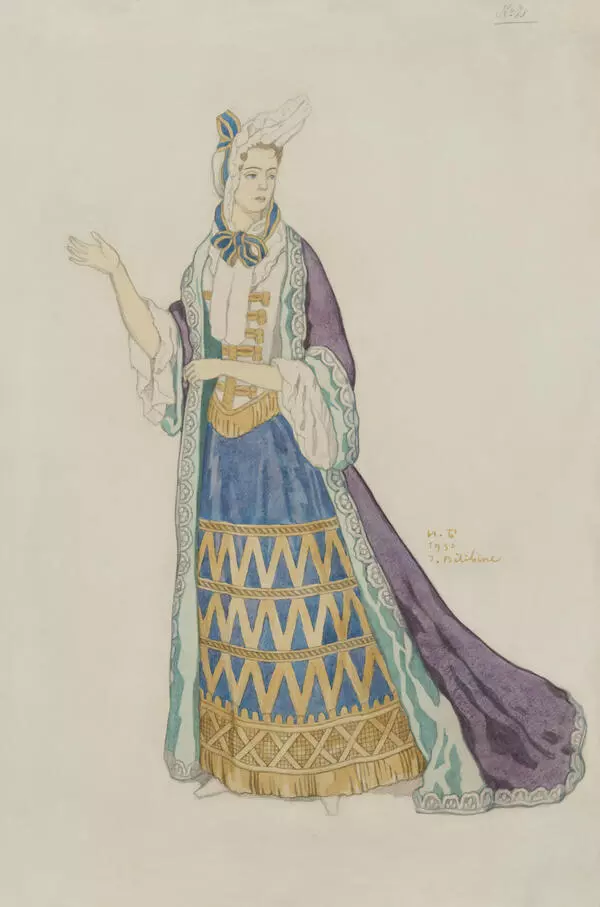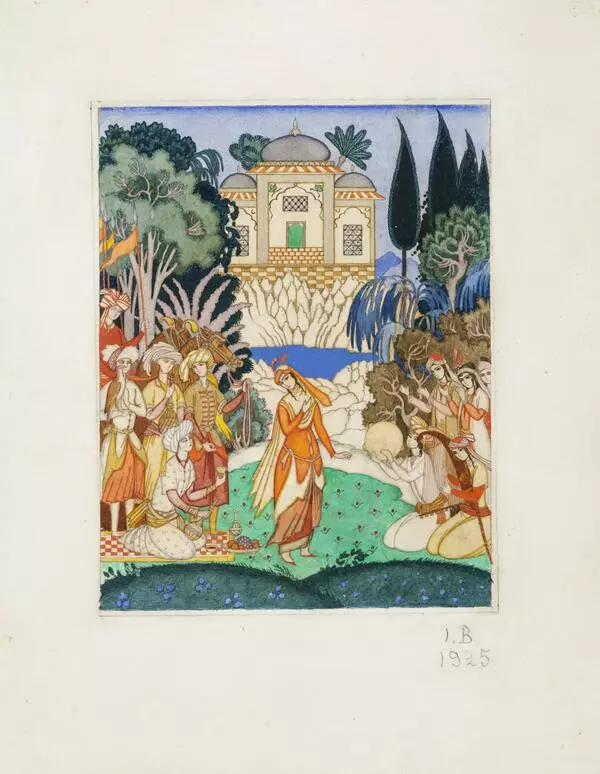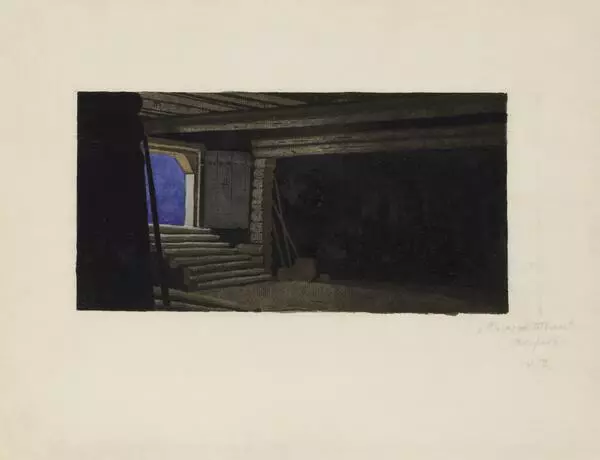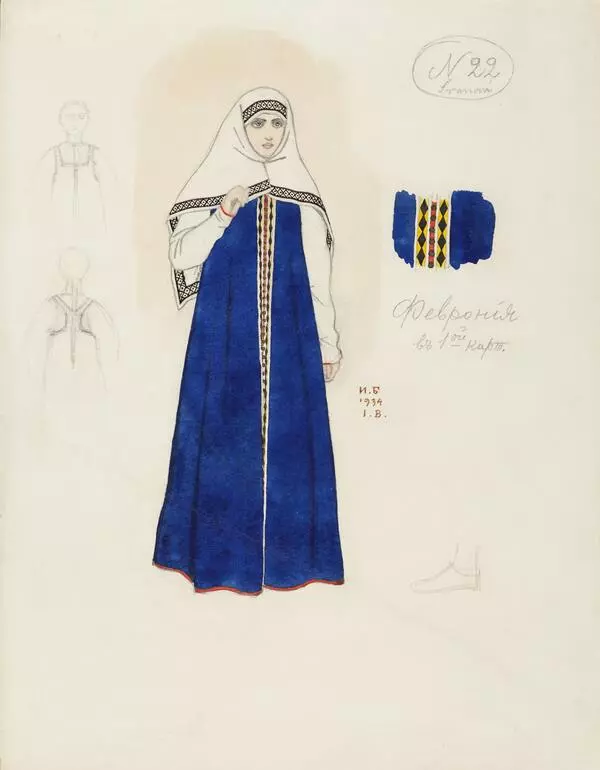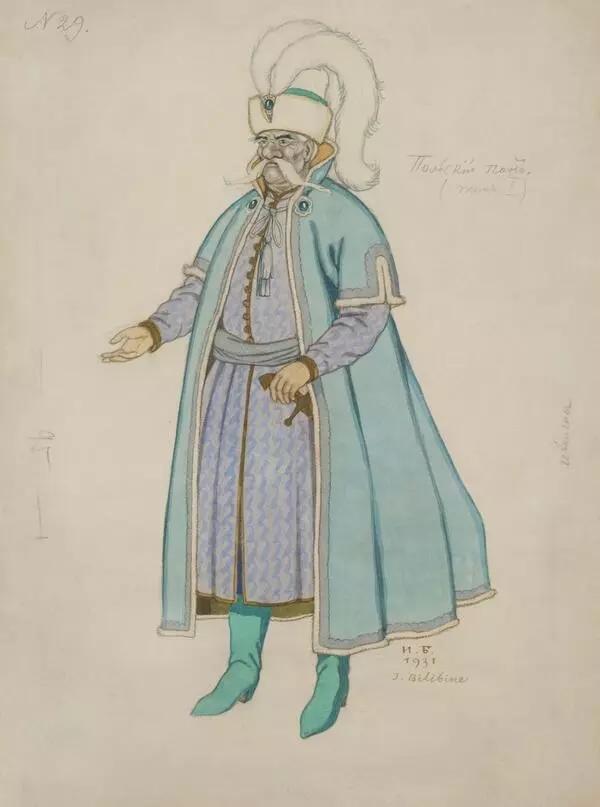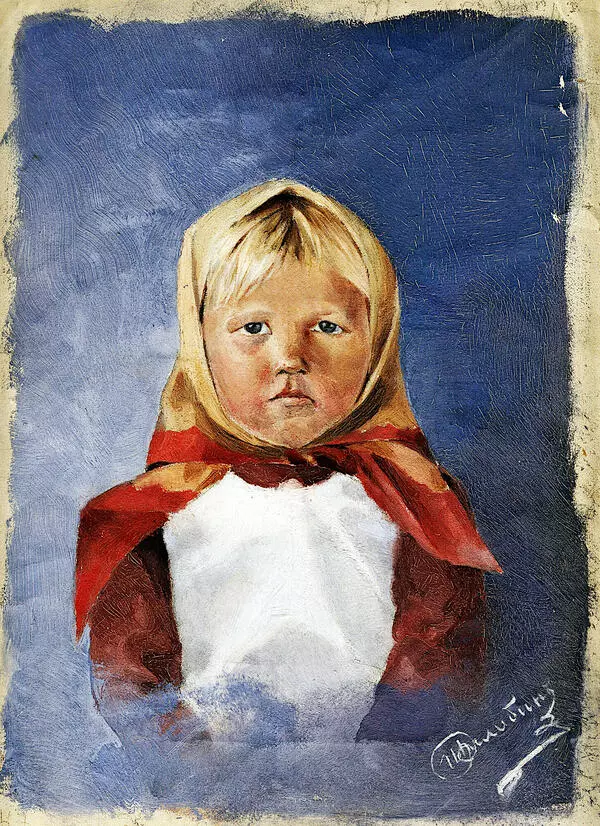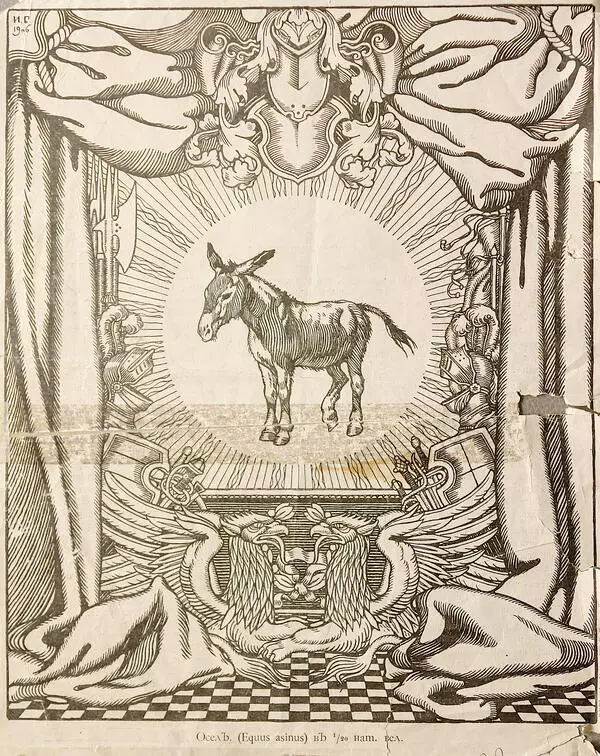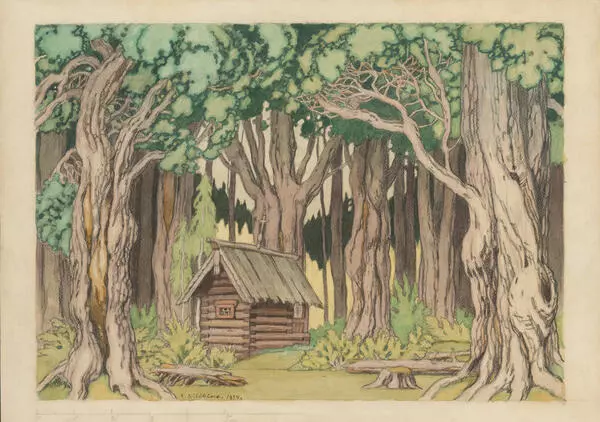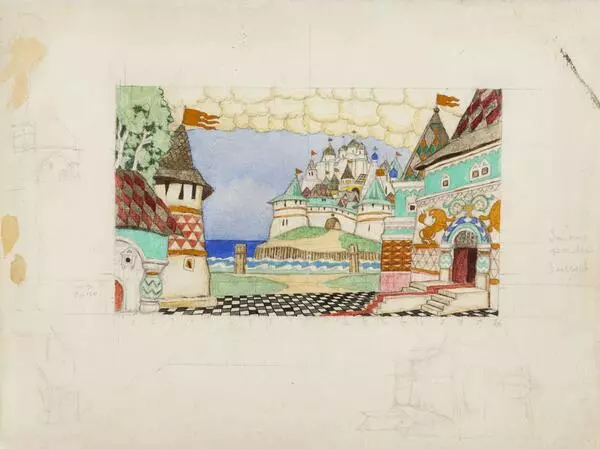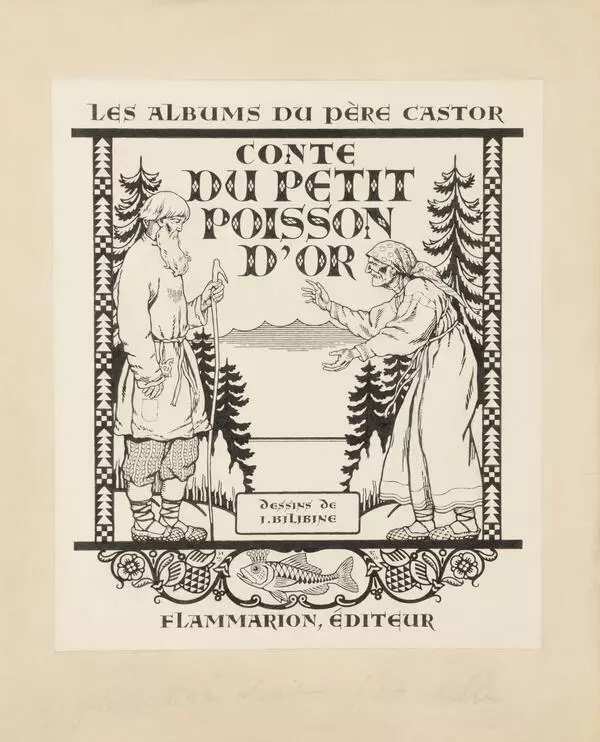The postcard shows the image of a “Young Vologda Woman in Festive Attire”. The author of the image is Ivan Yakovlevich Bilibin, a painter, graphic and theater artist, who painted pictures and colorful illustrations of Russian fairy tales and epics.
The traditional Russian women’s costume in central and northern Russia consisted of a shirt, a sundress and an apron. Expensive fabrics from overseas, such as silk, satin or brocade, were sometimes used for making clothes. The shirts were richly decorated with colorful embroidery or patterned inserts. Sundresses could be sewn from twisted panels (with a seam in the front) or from a single piece of fabric. They had wide straps or a wide collar. They were decorated with braids, lace, and hanging buttons. The headdress of the women from these regions included a kokoshnik and a scarf. They were often decorated with pearls or embroidered with beads. In the north, short dushegreykas (shirts) and long fur coats made of real fur were also common. In various regions, the craftswomen were famous for specific type of needlework. For example, the Arkhangelsk governorate was known for luxurious embroidery and lace, Tver — for gold embroidery, and Simbirsk outfits were distinguished by a large, beautifully decorated kokoshnik.
The collection of folk costumes, which Bilibin acquired during his ethnographic expeditions, served as inspiration for his work on illustrations of Russian fairy tales and stylizations on the peasant theme. Costumes from Bilibin’s collection, housed in the Ivangorod Museum, were reproduced in his works multiple times. Ivan Yakovlevich admired the beauty of Russian women in festive outfits.
Photographs of his first wife Maria Yakovlevna Chambers-Bilibina, who posed for the artist in a Russian costume, as well as of himself in a peasant shirt, have been preserved.
The motifs which the artist saw in expeditions are found everywhere: in Bilibin’s postcards, fairy tale illustrations, and sketches of scenery for theatrical productions. He even directly borrowed patterns of Russian festive clothes, towels, and letters of old printed books. Thus, these motifs decisively contributed to his vision of the theatrical costume made for the great ballerina Anna Pavlova. The costumes from the artist’s collection date back to the middle of the 19th century.
Ivan Yakovlevich loved all these old artifacts and used them to decorate his apartment on the 10th line of Vasilyevsky Island in Saint Petersburg. There were straw chairs in the dining room, and on the table, covered with a beautiful rustic tablecloth, there were a pot-bellied samovar, a tavern teapot and beautiful painted cups in which tea seemed tastier. Ivan Yakovlevich was a hospitable and obliging host.
The traditional Russian women’s costume in central and northern Russia consisted of a shirt, a sundress and an apron. Expensive fabrics from overseas, such as silk, satin or brocade, were sometimes used for making clothes. The shirts were richly decorated with colorful embroidery or patterned inserts. Sundresses could be sewn from twisted panels (with a seam in the front) or from a single piece of fabric. They had wide straps or a wide collar. They were decorated with braids, lace, and hanging buttons. The headdress of the women from these regions included a kokoshnik and a scarf. They were often decorated with pearls or embroidered with beads. In the north, short dushegreykas (shirts) and long fur coats made of real fur were also common. In various regions, the craftswomen were famous for specific type of needlework. For example, the Arkhangelsk governorate was known for luxurious embroidery and lace, Tver — for gold embroidery, and Simbirsk outfits were distinguished by a large, beautifully decorated kokoshnik.
The collection of folk costumes, which Bilibin acquired during his ethnographic expeditions, served as inspiration for his work on illustrations of Russian fairy tales and stylizations on the peasant theme. Costumes from Bilibin’s collection, housed in the Ivangorod Museum, were reproduced in his works multiple times. Ivan Yakovlevich admired the beauty of Russian women in festive outfits.
Photographs of his first wife Maria Yakovlevna Chambers-Bilibina, who posed for the artist in a Russian costume, as well as of himself in a peasant shirt, have been preserved.
The motifs which the artist saw in expeditions are found everywhere: in Bilibin’s postcards, fairy tale illustrations, and sketches of scenery for theatrical productions. He even directly borrowed patterns of Russian festive clothes, towels, and letters of old printed books. Thus, these motifs decisively contributed to his vision of the theatrical costume made for the great ballerina Anna Pavlova. The costumes from the artist’s collection date back to the middle of the 19th century.
Ivan Yakovlevich loved all these old artifacts and used them to decorate his apartment on the 10th line of Vasilyevsky Island in Saint Petersburg. There were straw chairs in the dining room, and on the table, covered with a beautiful rustic tablecloth, there were a pot-bellied samovar, a tavern teapot and beautiful painted cups in which tea seemed tastier. Ivan Yakovlevich was a hospitable and obliging host.
